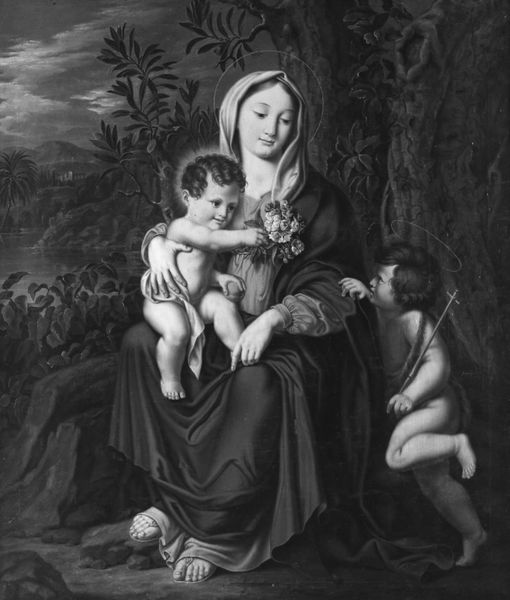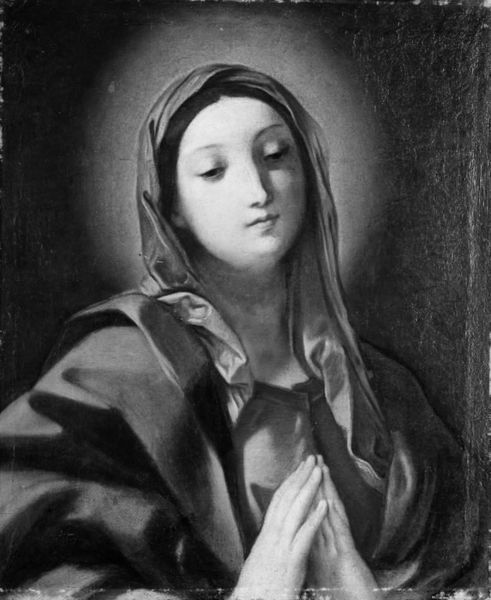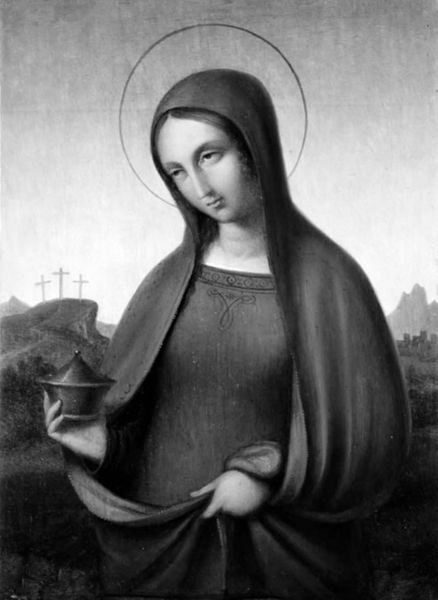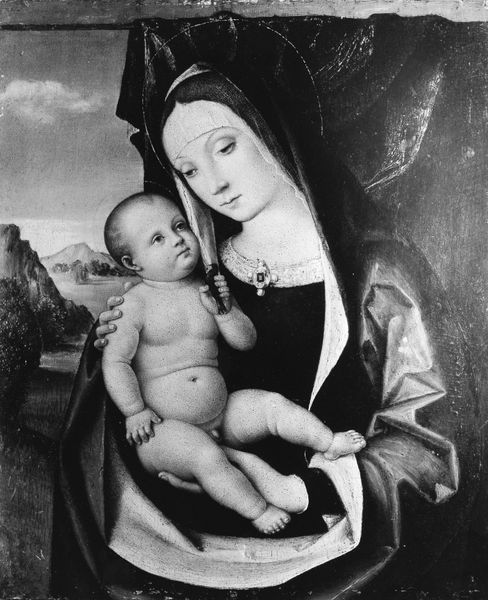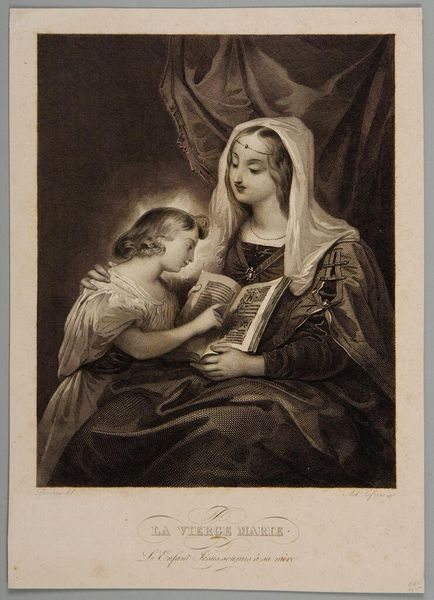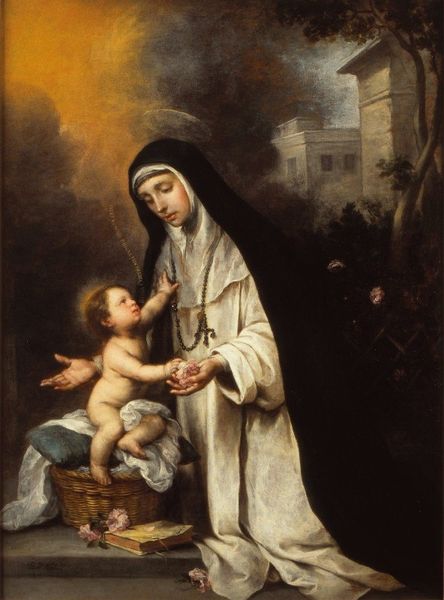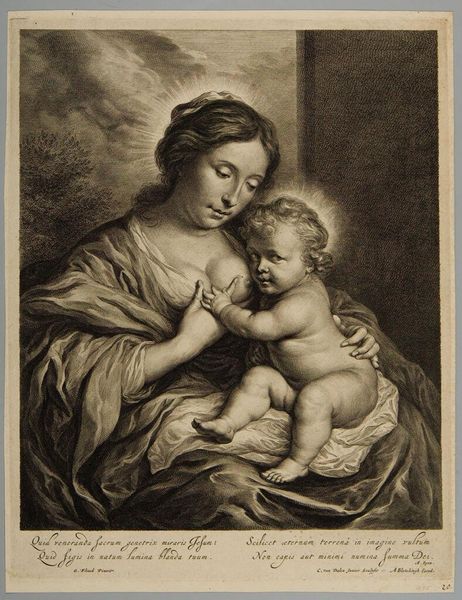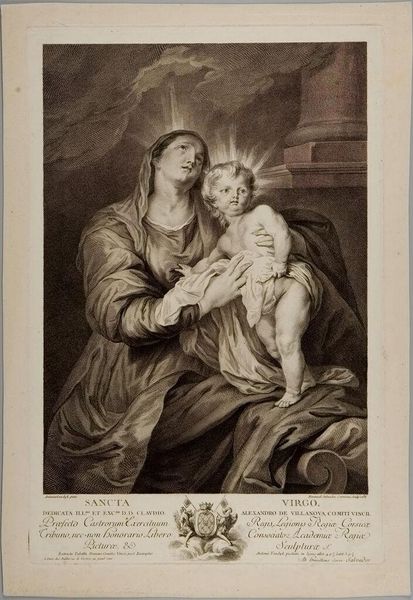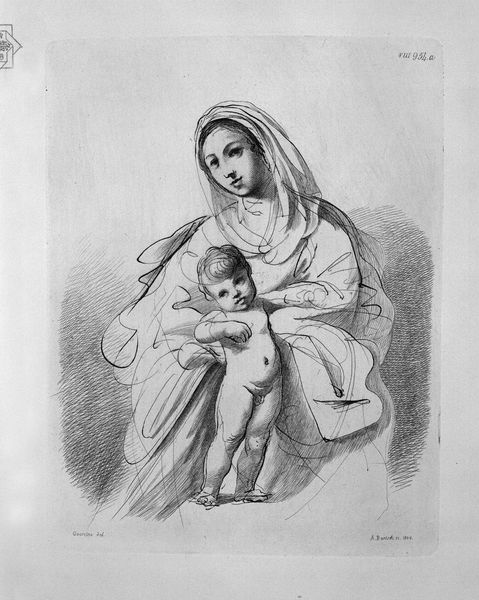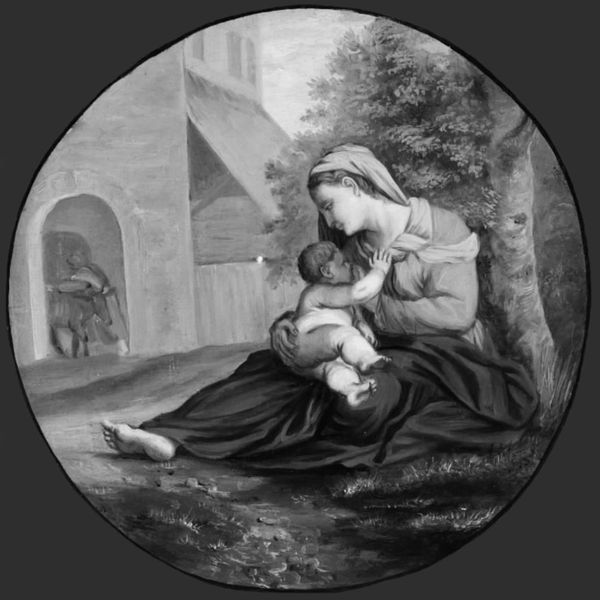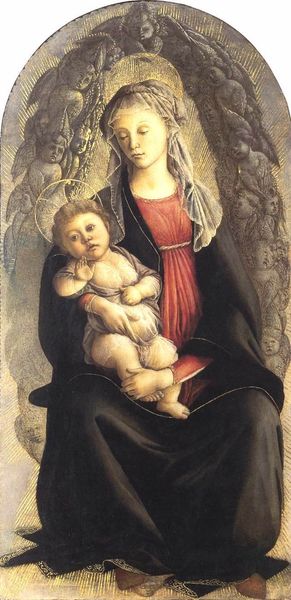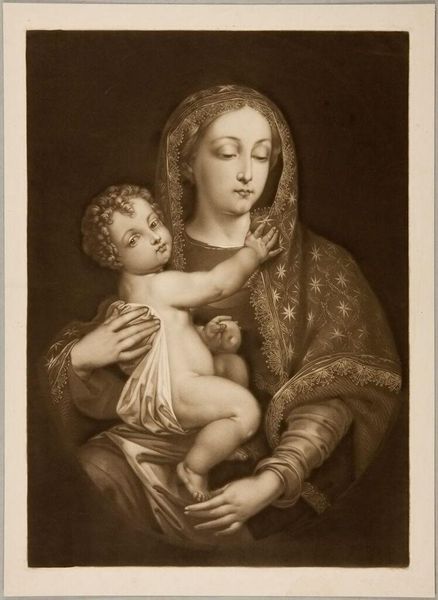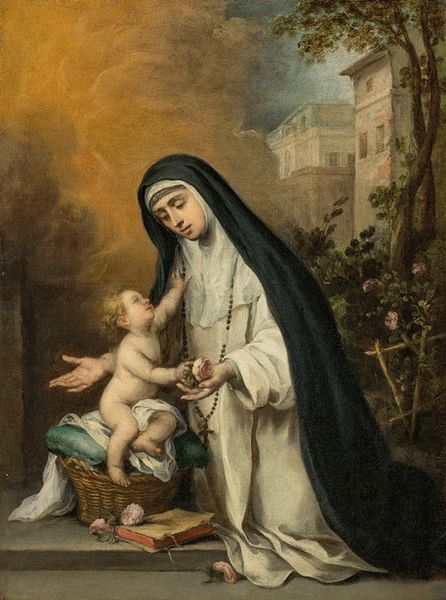
Jomfru Maria med det sovende Jesusbarn i et landskab 1792 - 1832
0:00
0:00
painting, oil-paint, canvas
#
portrait
#
portrait
#
painting
#
oil-paint
#
landscape
#
charcoal drawing
#
figuration
#
canvas
#
romanticism
#
chiaroscuro
#
surrealism
#
history-painting
Dimensions: 82 cm (height) x 66 cm (width) (Netto)
Curator: This canvas, "Jomfru Maria med det sovende Jesusbarn i et landskab," was created by Carl Christian Seydewitz sometime between 1792 and 1832. It is held here at the SMK, the National Gallery of Denmark. Editor: Immediately striking is the almost dreamlike quality. The subdued color palette lends an ethereal feeling to the figures, making them appear sculpted from light rather than merely painted. Curator: Yes, Seydewitz seems preoccupied with contrasting light and shadow. Given the landscape context, think about the late 18th-century shift from courtly patronage to the open market. How might a religious painting become appealing, and saleable, to a wider audience? Editor: Certainly, the dramatic chiaroscuro typical of Romanticism amplifies the emotional intensity. Her gaze towards the heavens and Jesus's peaceful slumber...It speaks of earthly burdens and divine grace. The composition, divided between earthly foreground and ethereal background, echoes this contrast. Curator: And let's consider the labor behind this image. The materials—oil paint, canvas—weren't simply available. What class status did they reflect, and to what kind of consumer were they accessible? How does that economic framework shift the cultural meaning, away from pure devotion and towards something...more worldly? Editor: Perhaps the precise balance achieved through composition suggests an ideal: serene, devout motherhood contrasted against a wild, romantic backdrop. Observe how Seydewitz renders the folds of Mary’s robe. Note that the folds almost seem to be sculpted—an allusion to classical forms. Curator: And yet, if we really dissect the socio-economic circumstances—the patronage system, the artist's own ambiguous position, how the image would have circulated and been consumed...these factors complicate our view of it being merely an idealization. The artist had to eat, after all. Editor: Precisely, but through rigorous visual assessment and attention to classical composition, we unveil Seydewitz's intended meaning of conveying profound emotional depth. Curator: Right. And hopefully, by acknowledging both the artifice and the labor inherent to creating such art, we come to a better grasp of it within its complete historical moment. Editor: A layered perspective indeed!
Comments
No comments
Be the first to comment and join the conversation on the ultimate creative platform.
